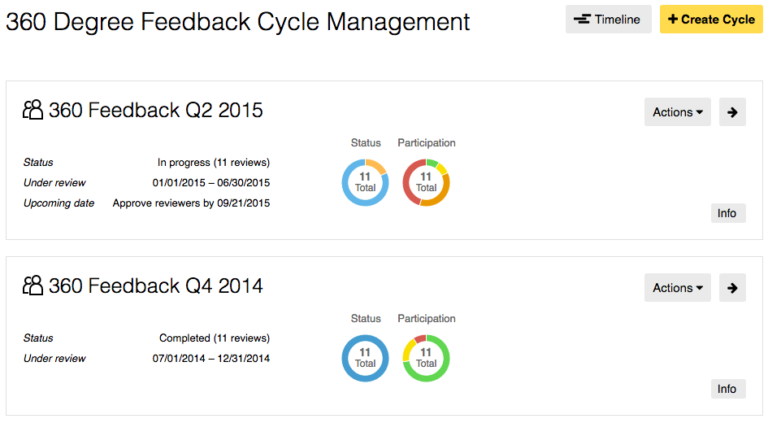[cs_gb id=11833]
Picture yourself at the end of a long period of designing a great new performance management process.
You are now ready to communicate these new processes across your organization. You’ve invested a lot of time and energy creating processes that will work better and feel better to both employees and managers. Ensure your efforts achieve impact by crafting a solid performance management communication plan.
Regardless of how much your old process was disliked, your new process represents an unknown new reality. A well-planned, robust communication effort can help decrease (although not eliminate) the resistance you will encounter during the implementation.
Here are some tips and examples to help guide your communication planning efforts.
Sell, don’t tell
As you communicate, highlight how and why this new process is better and will be beneficial to everyone. It can be helpful to think about how you’d sell these new processes if it was optional for employees and managers to use it. Focus on the benefits of the new process – don’t just tell them what’s happening.
Share the why
Make sure your employees understand why the new process was created. Share with them the inclusive process that was used involving feedback from all across the organization. This will help create buy-in.
[cs_gb id=9195]
Segment your communication
One size does not fit all when it comes to communication. Consider the different types of employees across your organization (hourly, salary, non-manager, manager, etc.) and ask “How does this impact me?” from their perspective. Make sure your performance management communication plan is segmented to answer that question in detail for each distinct group of employees.
Invest the time to communicate well
One organization I am familiar with, when rolling out a significant change, invites all employees to attend small in-person briefings. Each briefing is limited to 20 attendees to ensure that every employee can ask questions and make their concerns heard. This approach could mean scheduling a lot of briefings, but if the end result is successful adoption of the new program, it’s worth it.
Overdo it
Err on the side of over-communicating about the change. The “rule of 7” from marketing suggests we need to hear a message seven times before we truly retain it. The goal is to make sure everyone knows what’s coming (and why) by the time it arrives. Use multiple methods of communication – from kick-off emails to all-hands presentations – to ensure every employee hears the message multiple times.
Add some fun
Host a “launch event” for the new process. Consider scheduling the whole business stop working for a short time to gather for a fun celebration, presentation, and Q&A. This serves both to reinforce the importance of the new process and educate about what the change means.
We hope you found Jason Lauritsen’s tips useful. Of course, there’s much more to rolling out a new process. So if you’d like some more guidance, download the guide Creating a Performance Management Process That Works.



